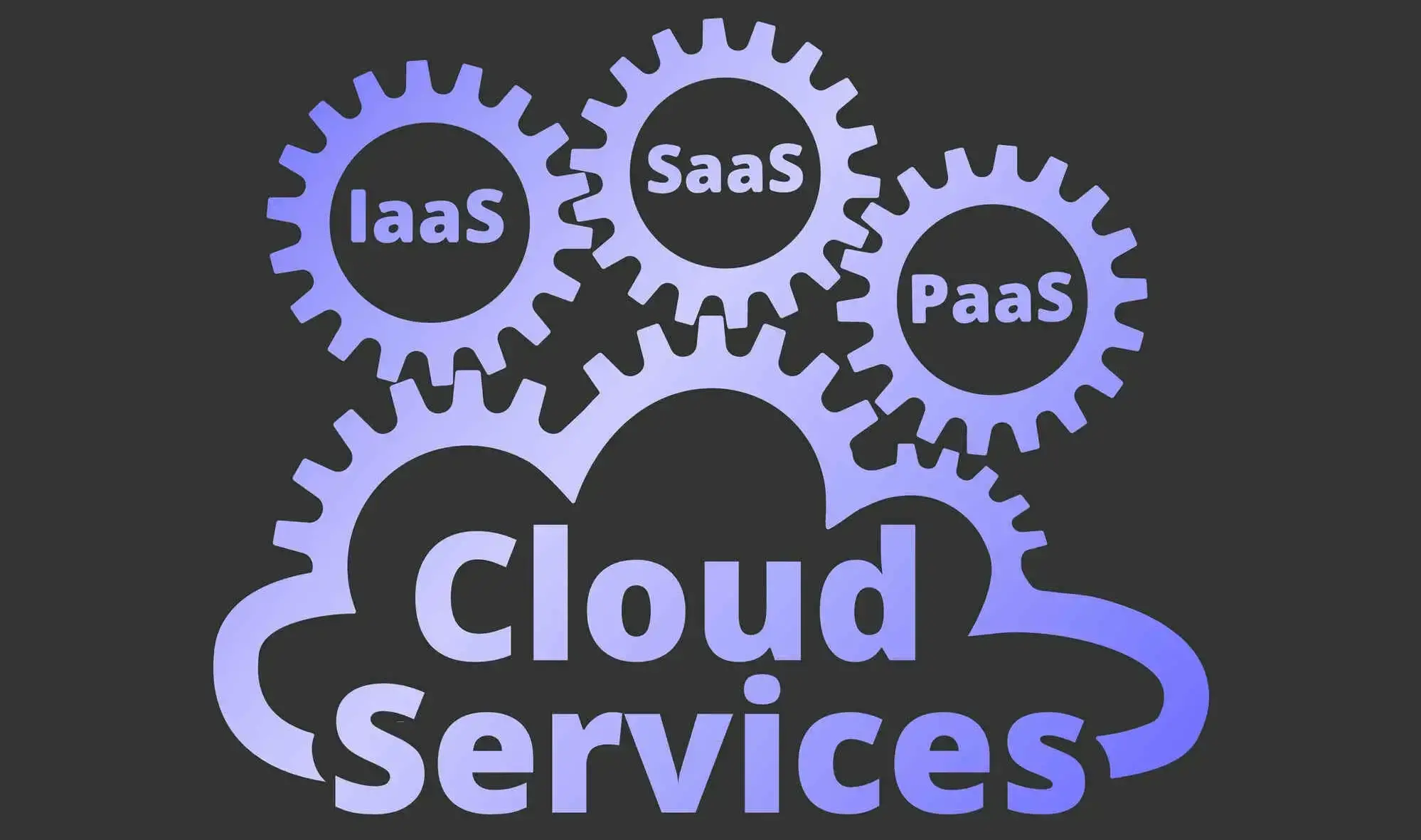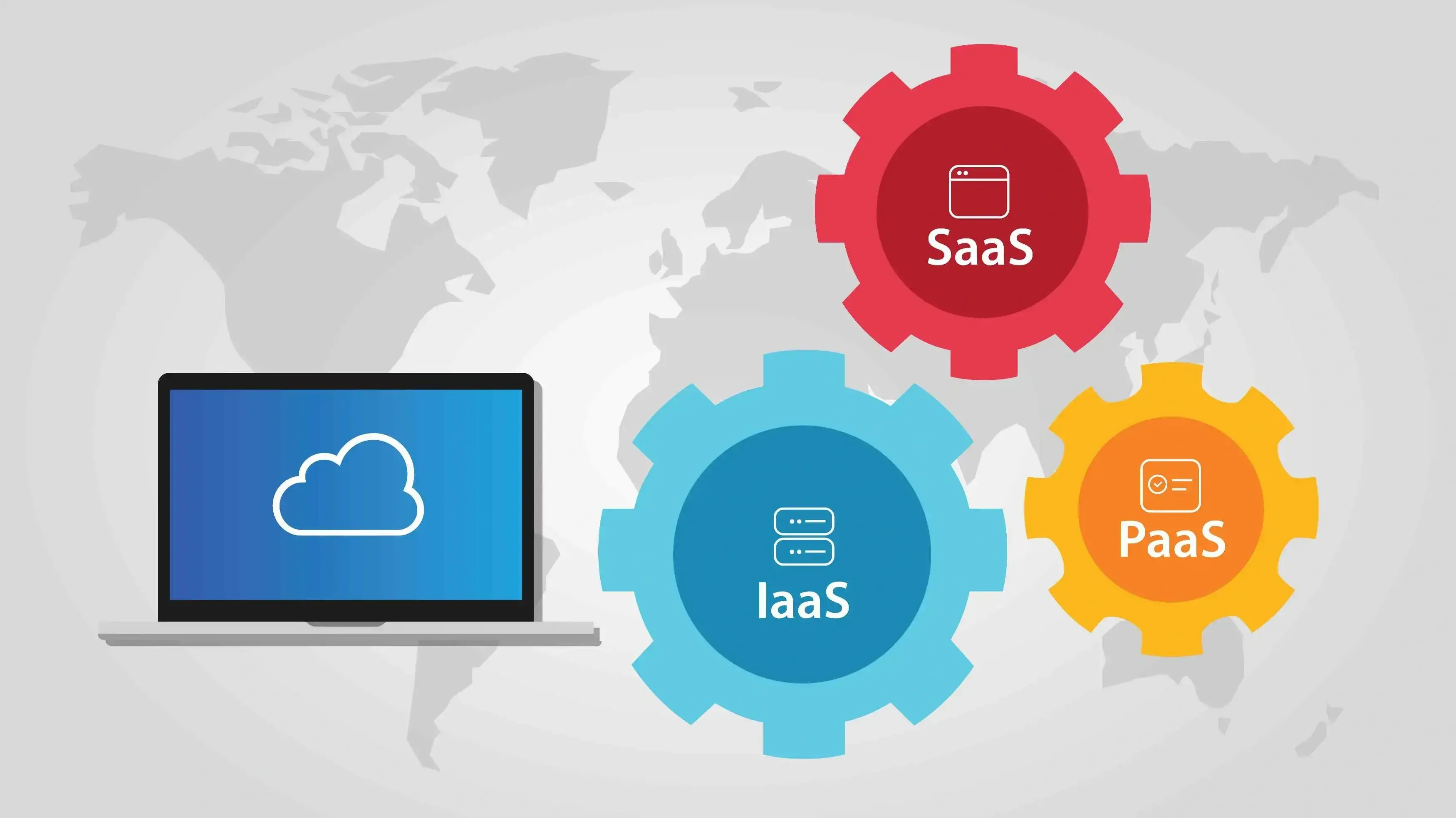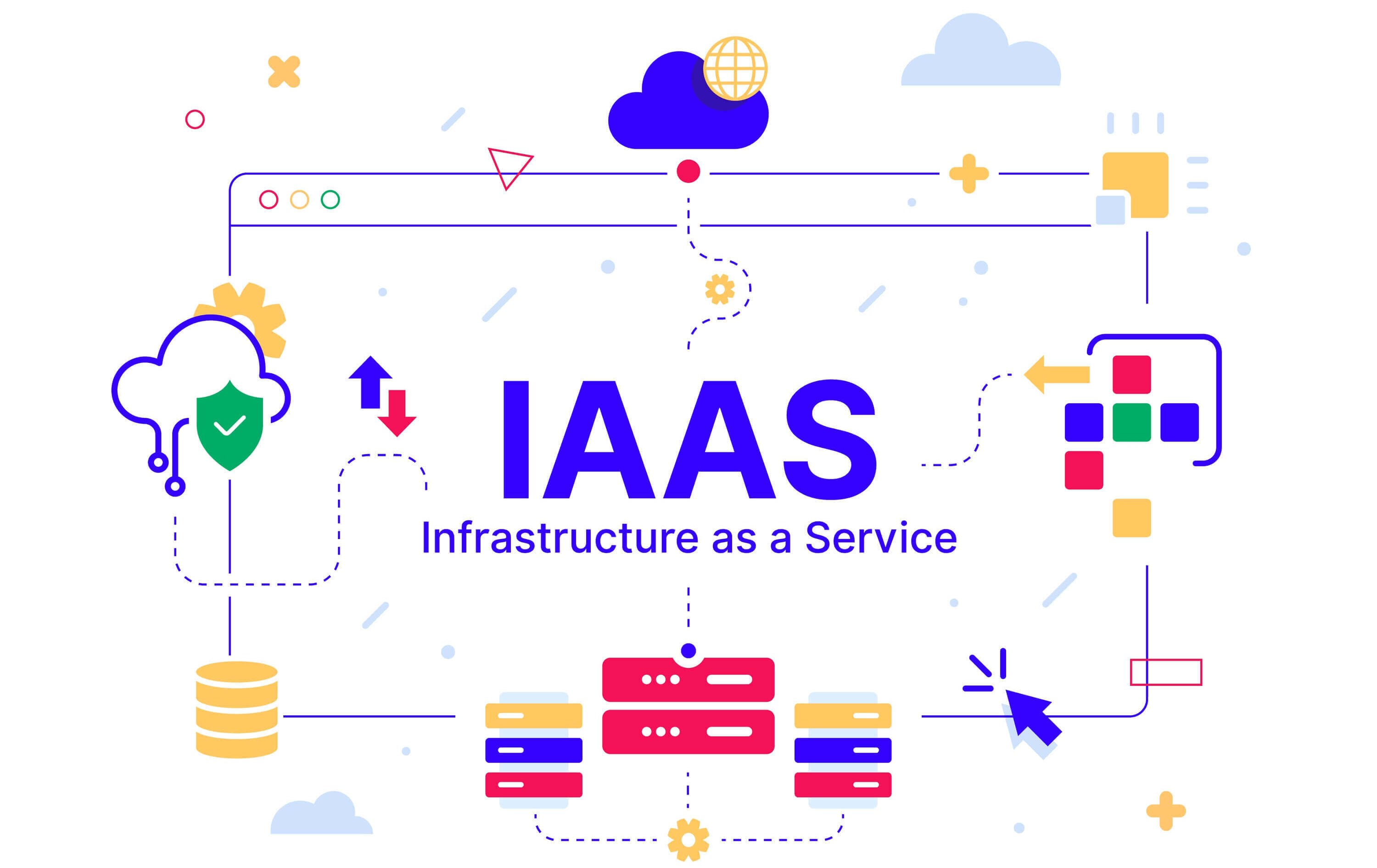The internet is constantly growing, introducing innovations like cloud computing, a field projected to be worth $800 billion by 2025.
Similarly, Infrastructure as a Service (IaaS) — another arm of cloud computing, is expected to grow to $304.39 billion by 2029.
This article closely examines these tools, what they offer, and how they can benefit your business.
What Is IaaS?
IaaS is a model of cloud computing that provides on-demand access to cloud-based servers, storage, and networking.
It operates on a pay-as-you-go model and is a growing, profitable market, with 90% of providers experiencing growth in 2020.
What Does “As A Service” Mean?
The term "as a service" in IaaS highlights the shift from traditional IT, where companies buy and manage their IT resources, to cloud infrastructure.
In cloud computing, the provider owns and maintains these resources, and customers access them over the internet and pay as they use.
With IaaS, you have two main options:
Virtual Machines (VMs): Hosted on shared physical hardware with virtualization managed by the cloud service provider.
Bare Metal Servers: Hosted on dedicated private physical hardware.
The key advantage of IaaS is that it allows you to use IT networking resources without purchasing or managing them.
You only pay for what you need, while the service provider handles the management and maintenance.
What Is Cloud Computing?

Cloud computing is the delivery of hosting services on demand via the internet.
It allows you to remotely store files in a virtual space, eliminating the need for on-site data centers or devices.
Cloud computing offers a variety of resources to users:
- Data Storage
- Servers
- Databases
- Networking
- Software
There are two primary cloud types:
Private Cloud: Accessible by anyone, offering services to all users.
Public Cloud: A more exclusive data center, hosting services for a select group of users.
Benefits and Drawbacks of IaaS
Benefits
Drawbacks
Benefits Of IaaS
Easy Onboarding
IaaS offers a cost-effective and swift cloud migration for apps and workloads without needing to change the underlying architecture.
This, in turn, boosts performance, enhancing security, and reducing operational costs.
Agility and Speed
IaaS enhances the efficiency and agility of test and development processes.
- Quick Setup and Dismantling: Accelerates the creation and removal of environments.
- Faster Market Introduction: Speeds up the launch of new applications.
- Cost-Effective Scaling: Simplifies and reduces the cost of expanding test and development environments.
Data storage, Backups, and Recovery
IaaS offers a streamlined approach to data management and scalability.
- Cost Savings: Eliminates expenses related to in-house storage management.
- Expert Management: The provider handles all legal, compliance, and technical aspects.
- Handling Demand: Efficiently manages sudden or steady increases in data needs.
- Backup and Recovery: Simplifies planning and execution of data backup and recovery systems.
Comprehensive Web Support
IaaS provides essential infrastructure for web apps, including storage, servers, and networking. It allows businesses to rapidly build and scale web apps as demand fluctuates.
High-performance Computing
IaaS facilitates high-performance computing for tackling complex, calculation-intensive tasks.
- Supercomputing Platforms: Uses supercomputers, grids, and clusters.
- Complex Problem Solving: Aids in addressing intricate issues with many variables.
- Diverse Applications: Useful for earthquake simulations, weather forecasting, financial modeling, and product design evaluations.
Cost reduction
IaaS offers superior value by eliminating the need for physical data centers and reducing costs through its flexible pricing model.
- No Physical Data Center Costs: Companies save on setting up and managing physical infrastructure.
- Pay-as-you-go Pricing: Costs align with actual usage, lowering hardware expenses.
- Reduced Maintenance: Shifts the technical burden to the IaaS provider, freeing up your team to focus on business objectives.
Superior stability and reliability
With IaaS, the provider manages software and hardware maintenance, upgrades, and troubleshooting, ensuring your infrastructure is reliable and meets service-level agreements.
Minimized Downtime
IaaS protects your underlying infrastructure from external problems like hardware failures, internet outages, and data loss, ensuring it remains secure and operational.
Drawbacks Of IaaS
Security
Businesses have no direct control over IaaS cloud security and need to review the provider's SLA for security details.
To ensure safety, users must scrutinize the SLA to identify and address any potential security gaps.
Technical Issues
Sometimes, businesses may face downtime with IaaS, restricting access to applications, data, and workloads.
Uptime depends on provider
- Complete Control Risk: Relying solely on IaaS makes you dependent on the provider.
- Third-Party Issues: Provider problems can directly impact your business.
- Data and Workload Vulnerability: Issues with the IaaS provider can jeopardize your data and operations.
Incompatibility with existing infrastructure
IaaS may necessitate adjustments to business processes and workloads for some companies.
Can be difficult to integrate
Some businesses may find integrating IaaS with their current systems challenging.
Selecting a competent provider
Selecting an IaaS provider can be challenging due to the complex vetting process.
Examples Of IaaS
Here’s a list of the top IaaS providers:
- Digital Ocean
- IBM Cloud
- Amazon AWS
- Microsoft Azure
- OpenStack
- Rackspace
- VMware
- Red Hat
- Togglebox
- Green Cloud Technologies
- Google Compute Engine
- Linode
- Cisco Metapod
- CenturyLink Cloud
- INAP
- Linode
- Virtual Machine Manager
- Alibaba Elastic Compute Service
Who Should Consider Using IaaS?
IaaS is ideal for start-ups and small businesses, reducing the need to manage technical aspects.
Large enterprises prefer IaaS for its pay-for-what-you-use model, saving time and money.
Rapidly growing companies benefit from IaaS's scalable options, adjusting resources as needed.
Complex websites with fluctuating traffic opt for IaaS for its on-demand computing power and flexibility.
Companies requiring high computing performance use IaaS for tasks needing supercomputers or clusters.
Data-intensive companies choose IaaS to manage, analyze, and integrate massive workloads with business tools.
Other Cloud Service Models

PaaS
In the PaaS (platform as a service) model, cloud providers offer development tools on their platforms, accessible via APIs, web portals, and gateways.
PaaS is used for creating generic software, and providers often host the software upon completion. Examples include Google App Engine, Microsoft Azure, and Heroku.
SaaS
SaaS (Software as a service) is a way to deliver software over the Internet, allowing users to access applications from anywhere via a PC or mobile device with an Internet connection.
It gives users access to both software and databases. Examples include Shopify, IBM Cloud, and Oracle Cloud.
IaaS vs. Traditional IT Infrastructure
In the fast-changing IT world, businesses must decide between using Infrastructure as a Service (IaaS) or traditional IT.
Knowing the differences and benefits of each is crucial for informed choices.
Here are the key distinctions:
| IaaS | Traditional IT | |
|---|---|---|
| Cost Efficiency | Pay-as-you-go model eliminates upfront hardware costs, reducing financial barriers for businesses of all sizes. | High upfront capital expenses for hardware and ongoing maintenance costs can strain budgets. |
| Scalability | Easily scale resources up or down in response to changing demands, ensuring optimal resource utilization. | Scaling requires purchasing new hardware, often resulting in overprovisioning or underutilization. |
| Maintenance and Management | Service providers handle hardware maintenance, software updates, and security, freeing up IT teams. | In-house teams are responsible for maintaining and securing hardware, diverting resources from strategic initiatives. |
| Agility and Speed | Rapid provisioning of resources accelerates development, testing, and deployment of applications. | Lengthy procurement cycles can hinder project timelines and time-to-market. |
| Disaster Recovery | Built-in redundancy and data backup options enhance disaster recovery capabilities. | Developing robust disaster recovery solutions can be complex and costly. |
| Security | Providers invest heavily in security measures and compliance, offering robust protection. | Security measures are as strong as the organization's budget and expertise allow. |
| Flexibility | Experiment with different configurations, operating systems, and software without hardware constraints. | Hardware choices can limit flexibility and require costly upgrades for changes. |
| Environmental Impact | Consolidated data centers and efficient resource allocation contribute to greener computing. | Legacy infrastructure can be energy-intensive and less eco-friendly. |
IaaS in DevOps Practices
Incorporating IaaS into DevOps practices can streamline development, enhance collaboration, and improve the efficiency of your software delivery pipeline.
Here are key ways IaaS supports DevOps:
Resource On-Demand: Get the resources you need when you need them, ensuring scalability.
Automated Provisioning: Use automation tools and APIs for infrastructure setup, allowing for efficient management and deployment.
Consistency Across Environments: Maintain uniform infrastructure settings for development, testing, and production to reduce deployment issues.
CI/CD Integration: Seamlessly integrate IaaS into your CI/CD pipeline for automated testing, deployment, and monitoring.
Resource Optimization: Optimize resource allocation to save costs and boost performance.
Scalability: Scale your infrastructure as traffic and demand change to meet your needs.
Collaboration: Collaborate effectively by sharing access to infrastructure configurations and deployment processes.
Flexibility: Experiment with different infrastructure setups and configurations for ongoing improvement and innovation in DevOps.
Quick Recap
Cloud computing services offer a cost-effective solution for businesses of all sizes to access essential IT resources.
IaaS is growing fast, appealing to everyone from small to large and start-up businesses. It's ideal for those who need IT resources without the hassle of self-management.
Users can purchase the exact amount of hardware and software they need, with the flexibility to adjust it as required.
Frequently Asked Questions
Do I need technical knowledge to use cloud hosting?
Not necessarily. Under a fully managed hosting package Verpex will take care of all the technical aspects for you.
Will cloud hosted websites be backed up?
Yes, Verpex performs daily backups of all sites hosted.
Why should I try a managed cloud server?
We’d highly recommend using a managed service, especially if you don’t have the technical skills to run a website. It might cost a little extra, but it certainly takes the stress out of site management.
How easy is it to increase bandwidth on cloud servers?
Incredibly easy. Since you’re in a pool of other servers you can draw on those resources at any time. If you need to increase your bandwidth or storage limits just give us a call and it can be done instantly.
What are the basic components of IaaS in cloud computing?
IaaS consists of servers, storage, networking hardware, a virtualization layer, and additional services. It offers users virtual access to computing resources.

I've been navigating the web hosting waters for years now. As the Chief Editor at Verpex, I team up with some awesome writers to dish out the good stuff on hosting. Got a Master's in Journalism, so I always have an eye out for quality. Whether you're just dipping your toes or you're a seasoned surfer, I'm here to make everything web hosting feel like a breeze
View all posts by Julia Lozanov



















